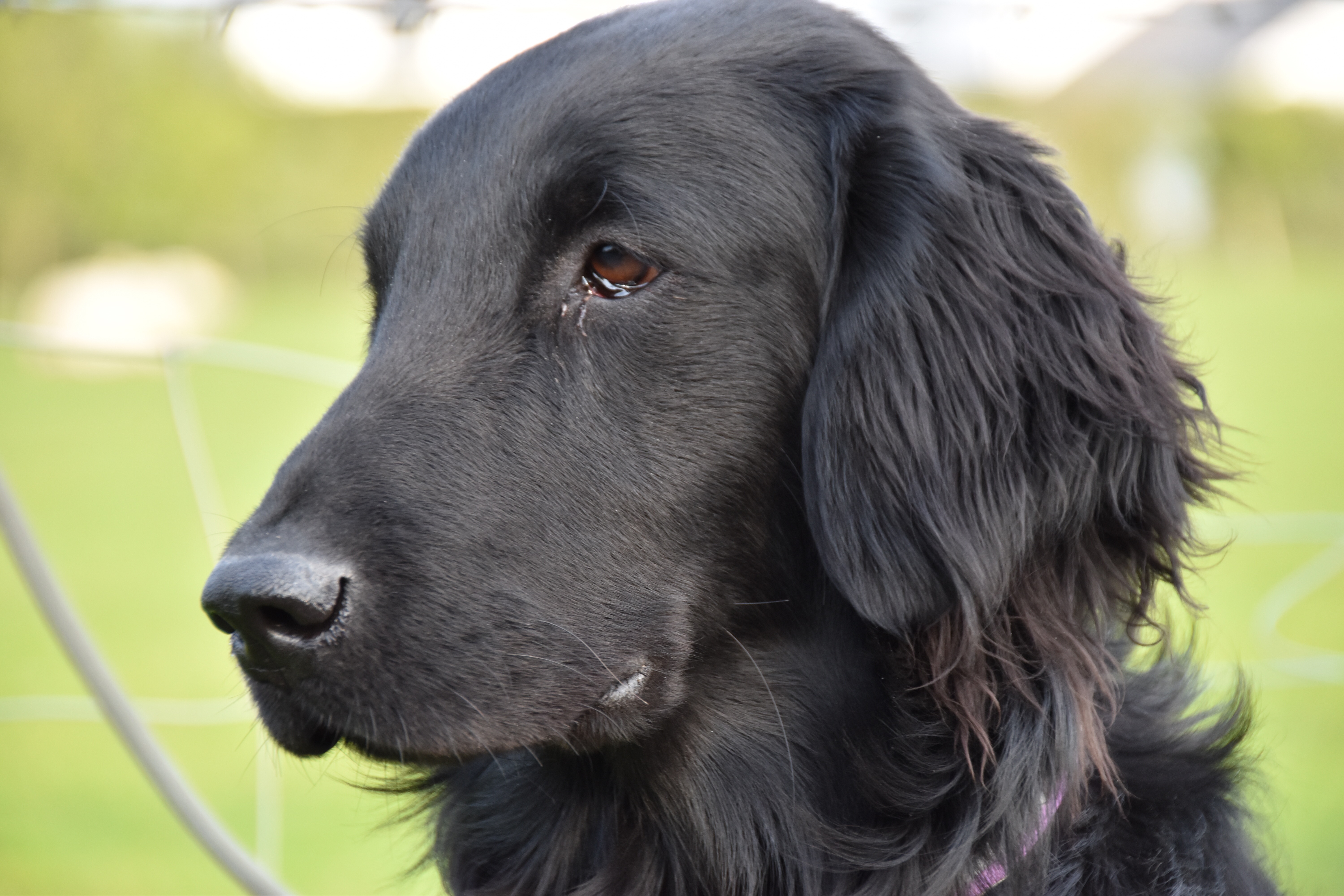
The Briard Dog – Profile – Health / Medical – Chein de Berger Brie – Info
The Briard Dog
“Shepherd Dog of Brie”
Dog breed info
Briard
Berger de Brie
Weight, Male 75 — 100 lbs
Weight, Female 50 — 65 lbs
Height:Male 23” — 27”
Height Female 22” — 26”
AKC Rank 2008 #121
Lifespan:10—12 yrs
Group Herding
- Dog Breeders – Worldwide
- Dog Health, Dog Illness, Medical Problems
Dog Breed Info – The Briard
Breed Overview
Origin: France, 1300’s. Original function: Herding, guarding sheep. Today Herding trials. Guarding, Companion, Police work, search and rescue.
The Briard is the oldest of four French sheepdog breeds and has been around for centuries. Dogs depicting this breed appear in tapestries dating back to the eighth century with more definitive evidence by the fourteenth century. This breed may be a cross between several French dogs including the Barbet and Beauceron. The early dogs were known as Chein de Berger Brie, or “Shepherd dog of Brie,” giving the clue that they may have come from the area of Brie, France. The dog originally was used to protect flocks from wolves and estates from intruders but was later found to be an excellent herding dog too. After the French Revolution, land was divided and the flocks had to be kept in tight groups on their property by the dogs which were now herding instead of guarding sheep. The breed went into the ring as show dogs around 1900. A revised breed standard appeared in 1909. The Briard was the official mascot of the French Army during WWII, tracking the enemy, guarding munitions and in search and rescue. It’s unclear but thought Lafayette and Thomas Jefferson brought samples of these dogs to America around the turn of the century. The AKC did recognize the breed in 1922 and the dog became only modestly popular from then forward but they are more popular in Europe and serve mostly as herding, guard and companion dogs.
The Briard is known to be a trainable breed and eager to please but needs a firm trainer with pack- leader skills. Also helpful is the use of clicker training and positive reinforcement. This dog’s temperament suggests a need to start heavy socialization and obedience training at the early age of 4 or 5 weeks and continue on through life. With strong guarding instincts, the breed needs a competent, kind, authoritative leader – an “alpha trainer.”
Crate Training
Want to crate train your Briard puppy? It’s easy and if you’re interested, take a look and you’ll see what to do. Crate training your dog will save many headaches and problems.
Potty Training
The Briard puppy is smart and usually pretty easy to house train, potty train, toilet train, housebreak or whatever you want to call it. If you have a puppy, decide if you want to crate or paper potty train it. For the best results, we have a page at Crate vs Paper Potty Training which will help you decide and from there you can get all the information you need to get the job done. Always praise the pup profusely when she goes potty in the RIGHT PLACE so she knows she has done a good thing. Either method will work for this breed.
If you have an older dog, take the dog outside every two hours until she gets the idea which door leads to her potty area. Older dogs catch on to the potty or housebreaking pretty fast once they are shown what to do.
Dog temperament is an important overview of the dog’s personality. The main purpose for this dog was to herd and protect animals like sheep. It still needs a job to do and above all else, craves that kind of work. This means when with humans, especially kids, the Briard likes to nip at the heels to “herd” the objects from place to place. This breed has the potential of being a loyal, devoted family pet but is not for everyone and probably not for the first time dog owner. The Briard is sensitive and does not take to harsh words and handling. Respect the dog, yes, but always be sure he knows his place in the family. YOU and the rest of the family must form the leadership role and your dog must know it. This dog does best when raised with children and other pets. He can be aggressive toward other dogs, and strangers.
Once the dog knows his place in the family, he can be loving, affectionate, gentle, and quite playful . He is self-assured, independent and has a bit of stubbornness about him. He needs plenty of exercise and is a willing jogging partner,
If you happen to get a Briard with a separation anxiety problem, that can be dealt with by investing a few hours of work on your part and some “tough love.” Top
Friendly Toward Other Dogs
No. Can be dog-aggressive. Territorial. Will pick and choose his dog friends.
Friendly Toward Other Pets
If raised with dogs and cats, okay. This is a herding dog and wants more than anything to have something to HERD so other animals in the house might get “herded.”
Friendly Toward Strangers
Wary of strangers. As a fierce guard dog, strangers are viewed as the enemy until they are introduced.
Playfulness
Very playful with family and kids.
Yes, can be affectionate IF well socialized as a puppy, trained by a kind, authoritative leader and given plenty of love and human friendship.
Best if the Briard is raised with the kids. Loves to play, romp and run with older, well-mannered children but will not tolerate kids’ antics of screeching, poking, pulling and pushing. Must be raised with the children and heavily socialized with kids starting as a young puppy. Will become extremely protective of the children.
Good with Seniors over 65?
No. Needs too much exercise and not suitable.
Living environment
House with a medium size fenced yard, farm or ranch. Needs to be indoors to enjoy companionship with his family of humans and to protect them as a “job.”
A doggie door and ability to go in and out to a fenced yard would be ideal for this dog.
Moderate energy. This is a herding dog, used to difficult work in the fields so has a lot of stamina.
The Briard is a good jogging partner. One or two long walks daily will work too, plus some play time like fetching balls or a Frisbee is also good. Add a training session for more exercise.
Excellent. Has above average hearing and is naturally protective.
Yes. Excellent. A guard dog by natural instinct.
None to very little shedding.
Has a long coat. Use a stiff bristle brush or metal comb from the pet store. Brush thoroughly 3 times a week to prevent matting.
Clean the ears once a week with a cotton swab. Remove oily, waxy buildups and trim excess hair to prevent moist areas where bacteria can accumulate and start ear infections. Do this VERY carefully Top
-
2nd book from the left is “A Dog Who’s Always Welcome” which takes your dog way beyond normal obedience training and into the real THERAPY DOG world of gentle friendliness with the people he knows and accepts. You will be able to take your Briard anywhere, anytime and his friends will welcome his arrival!
In the event you decide to go looking for Briard puppies, be SURE to find reputable breeders that really know what they are doing. Be sure the puppy has been well socialized and started in obedience training
Briard Breeders with puppies for sale.
This is basically a healthy breed. Don’t let the list below scare you! Your own dog will probably never have ANY of these problems. These are dog illness and medical problems this breed is prone to that have been listed by various veterinarians at different times over the past decade or so and some pertain to puppies and very young dogs that a breeder would deal with.
The information contained herein has been gathered from numerous books by veterinarians and is intended as general information only. Every dog and situation is different. You must see your vet. Our information is for general interest only and not intended to replace the advice provided by your own veterinarian.
Other health problems could occur with your Briard. If you notice any problems with your dog, take it to the vet immediately. This website is for general information only and is not intended to, in any way, be a medical guide.
Copyright © 2008 – 2016 All Rights Reserved Do not copy or reproduce any portion of this website without our consent. dog-adoption-and-training-guide.com

